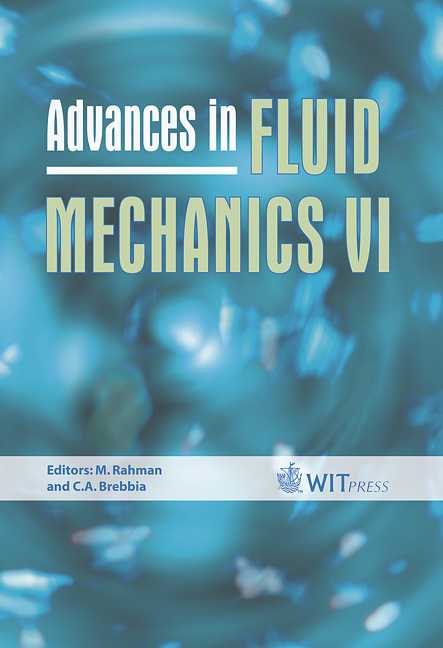Laboratory Tests On Flow Field Around Bottom Vane
Price
Free (open access)
Transaction
Volume
52
Pages
10
Published
2006
Size
1,977 kb
Paper DOI
10.2495/AFM060261
Copyright
WIT Press
Author(s)
M. M. Hossain, Md. Zahidu Islam, Md. Shahidullah, A. de Weerd, P. van Wielink & E. Mosselman
Abstract
Bottom vanes are vortex generating devices that are mounted on the river bed at an angle to the prevailing flow direction. They can be used effectively for sediment management and training of alluvial rivers. We tested the three-dimensional flow field generated by bottom vanes in a 45.6 m long and 2.45 m wide straight flume at the open-air physical modelling facility of BUET in Dhaka, Bangladesh, for all combinations of 4 vane heights, 5 vane angles and 2 bed topographies. Both topographies were moulded in concrete. The two bed topographies consisted of a flat bed and a bed with scour holes recorded in preceding mobile-bed experiments. Vanes at an angle of 30° to the flow were found to generate the strongest vortices. The scour holes did not weaken the vortices appreciably. We conclude therefore that local scour does not jeopardize the effectiveness of bottom vanes. Keywords: helical flow, vortex, bottom vanes, laboratory experiments. 1 Introduction Bottom vanes are vortex generating devices that are mounted on the river bed at an angle to the prevailing flow direction. The pressure difference between the pressure and suction sides of the vanes produces vortices that alter the transverse slope of the alluvial river bed in a zone downstream of the vanes. Thus bottom
Keywords
helical flow, vortex, bottom vanes, laboratory experiments.





